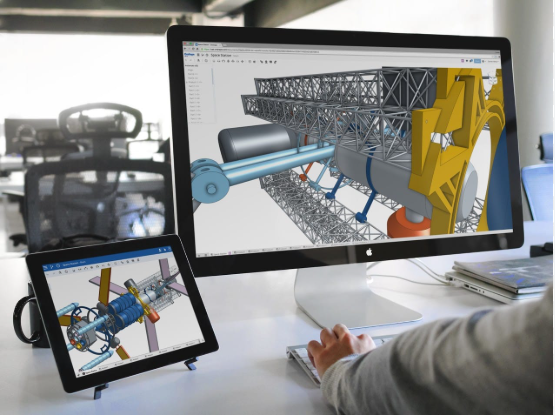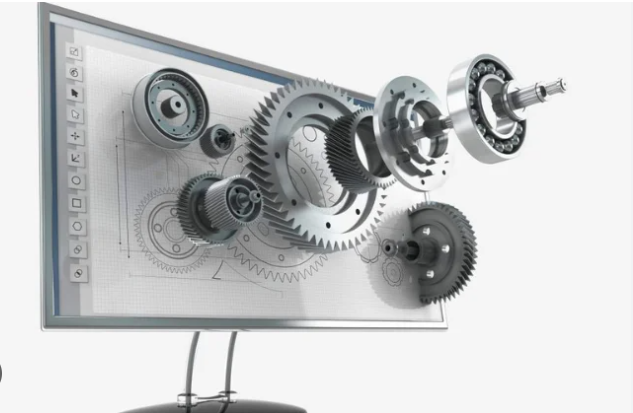
CAD Course in Visakhapatnam | AutoCAD is the most prominent Computer Aided Design (CAD) software among all well-known projects creating software which helps professionals to outline structures or items without drawing up planning physically.
The main objective of this course is to train the students about the elementary information significant for an expert 2D CAD drawing, plan, and drafting created in a 2D drafting device. CAD Course in Visakhapatnam | Indeed, students with no prior CAD experience can progress fast through this course which is designed in a easy and straightforward manner. Learners will learn all CAD essentials and the capacities in 2D drawing.
AutoCAD 3D is very well-known Computer Aided Design (CAD) software for creating projects to help professionals to plan 3D structures, items or architectural examples.
The main objective of this course is to train the students about the elementary information significant for making three dimensional models in different fields.CAD Course in Visakhapatnam | Learners will learn all CAD essentials and the abilities to change 2D Drawings to 3D drawings.

CAD Course in Visakhapatnam | Autocad makes amazing plans and speed up documentation work with lucrative tools. It has multiple in-build tools to help experts, planners or designers chip away at individual tasks. It aids one with designing drawings in which they can work with accurate estimations and precision.
3D designs are always favorable for clients, professionals and designers on the opinions they offer multiple choices over the traditional 2D outline. Hence, learning 3D CAD is very essential and AutoCAD is one of the best operated 3D CAD part for any business. Top CAD Course in Visakhapatnam | It has multiple in-build tools to help experts, planners or designers chip away at individual activities or tasks. It aids one with designing drawings in which they can work with accurate estimations and precision.
AutoCAD Civil 3D software enables civil engineers, designers, and planners to design, analyze, and document civil infrastructure projects. Best CAD Course in Visakhapatnam | Explore our library to learn how to create and modify 3D models, generate surfaces and alignments, perform calculations and simulations, and produce drawings and reports. Plus, get tips for collaborating with other professionals and optimizing your workflows using AutoCAD Civil 3D.

Autodesk Civil 3D 2023 is a feature-packed design and documentation solution for civil engineering, design, and surveying. By mastering the best-in-class tools within Civil 3D, you can boost your efficiency and effectiveness as a civil engineer, surveyor, or designer. In this course, Eric Chappell helps you get up and running with this powerful software, showing how to use most of the tools in Civil 3D as you work through a project: a new residential development. After an overview of the user interface—including features new to the 2023 version—Eric demonstrates how to model a surface, lay out parcels, and design road geometry in plan and profile views. Next, he explains how to create corridors, cross-sections, gravity pipe networks, and pressure pipe networks. Then he covers working with feature lines and grading objects, and wraps up with an overview of how to analyze and annotate surfaces. Each chapter is full of shortcuts and tips to make your workflow smoother and more efficient.
Of course. Here is a full, detailed explanation of a CAD (Computer-Aided Design) Course, covering its definition, types, target audience, core curriculum, benefits, and career paths.
What is a CAD Course?
A CAD course is a training program that teaches individuals how to use specialized software to create precise 2D drawings and 3D models. CAD is used to design, visualize, simulate, and document real-world objects and structures before they are built. It replaces traditional manual drafting with an automated, accurate, and efficient digital process.
Think of it as learning the language of digital design and engineering, allowing you to create blueprints for anything from a tiny mechanical gear to a massive skyscraper.
Who is it For?
CAD skills are essential in a wide range of technical and creative fields:
- Engineers: Mechanical, civil, electrical, aerospace, and manufacturing engineers use CAD for product design, analysis, and development.
- Architects & Architectural Drafters: To create floor plans, elevations, and detailed construction documents.
- Industrial & Product Designers: To develop the form, fit, and function of consumer products.
- Interior Designers: To plan spaces, create layouts, and produce realistic 3D visualizations.
- Construction Professionals: Project managers and estimators use CAD drawings for planning and costing.
- Hobbyists & Makers: For 3D printing, CNC machining, or DIY projects.
- Aspiring Drafters: People looking to start a career as a CAD technician or drafter.

Core Components
A comprehensive CAD course is typically structured to take you from absolute beginner to a proficient user.
Part 1: Foundations (Beginner)
- Introduction to CAD: Understanding the interface, workspaces, and navigation (Zoom, Pan, Orbit).
- Basic Geometry Creation: Drawing fundamental 2D shapes like lines, circles, rectangles, and arcs.
- Precision Input Techniques: Using coordinates (absolute, relative, polar), object snaps (OSNAP), and orthographic mode to draw accurately.
- Modifying Tools: Essential commands like Move, Copy, Rotate, Mirror, Scale, Trim, and Extend.
- Object Properties: Managing layers, colors, linetypes, and lineweights to organize a drawing.
- Basic Annotations: Adding text and simple dimensions to your drawings.
Part 2: Intermediate Skills (2D Drafting Proficiency)
- Advanced 2D Drawing & Editing: Using commands like Offset, Fillet, Chamfer, Array, and Hatch patterns.
- Block Creation and Management: Creating reusable symbols (blocks) and using external references (XREFs) to manage complex drawings.
- Layouts and Viewports: Setting up sheets for printing, creating scale drawings, and managing multiple views of a model.
- Plotting and Publishing: Outputting drawings to PDF or physical plotters with correct scales and line weights.
Part 3: 3D Modeling (The Core of Modern CAD)

- Introduction to 3D Space: Understanding the 3D coordinate system (X, Y, Z axes) and viewing tools.
- Solid Modeling: Creating 3D objects using primitives (box, cylinder, sphere) and complex operations like Extrude, Revolve, Sweep, and Loft.
- Surface Modeling: Creating complex, free-form shapes with curved surfaces.
- Boolean Operations: Uniting (Union), subtracting (Subtract), and finding the intersection (Intersect) of 3D solids to create complex forms.
- Modifying 3D Models: Using tools like Fillet/Chamfer on edges, shelling, and pushing/pulling faces.
Part 4: Advanced Topics & Specializations
- Parametric Modeling: Using features and constraints to create “intelligent” models that can be easily modified by changing parameters (a key feature in SolidWorks, Fusion 360, Inventor).
- Assembly Modeling: Building virtual products by inserting and constraining multiple parts together. Checking for interference and creating exploded views.
- Creating Technical Drawings: Automatically generating 2D orthographic views, sections, and detail views from a 3D model with associated dimensions and annotations.
- Basic Rendering & Visualization: Applying materials, setting up lighting, and creating photorealistic images of the model.
- Introduction to Simulation: Performing basic stress analysis (FEA) or fluid flow simulations to test the model’s behavior under real-world conditions.
Benefits of Taking a CAD Course
- High Employability: CAD skills are in constant demand across multiple industries.
- Increased Efficiency & Accuracy: Drastically reduces errors and design time compared to manual drafting.
- Better Visualization & Communication: 3D models and renderings help clients and stakeholders understand the final product before it’s built.
- Integration with Modern Workflows: CAD models are directly used for 3D printing (Additive Manufacturing), CNC machining (CAM), simulation (CAE), and project management (BIM).
- Foundation for Advanced Roles: Proficiency in CAD is the first step toward becoming a design engineer, BIM manager, or simulation analyst.
What to Look for in a Good CAD Course
- Hands-On, Project-Based Learning: The course should be centered around creating real-world projects, not just following commands.
- Industry-Standard Software: Ensure the course teaches a relevant software package (e.g., AutoCAD for AEC, SolidWorks for mechanical design).
- Instructor Expertise: The instructor should have professional experience using CAD in the industry.
- Certification Preparation: Many courses prepare you for official software certification exams (e.g., Autodesk Certified Professional, SolidWorks CSWA/CSWP), which greatly enhance your resume.
- Access to Software: A good course will provide temporary student licenses for the software.

Conclusion
A CAD course is a practical and powerful investment in a technical career. It equips you with the fundamental digital design skills that are the backbone of modern manufacturing, construction, and engineering. Whether you aim to be a drafter, an engineer, or an architect, mastering CAD is the essential first step to turning innovative ideas into precise, buildable reality.




